Making homemade salsa is not only easy, but it also a great way to use those fresh picked tomatoes and peppers from the garden or from the local Farmer’s market. And it is so much better and healthier than the jars of salsa that you get at the grocery.
Not to mention, that when making it yourself you can customize not only the flavor, but also the texture to exactly how you prefer. Whether you like thick and chunky salsa or a thinner salsa like you find at your favorite Mexican restaurant, when you make it yourself you control how it turns out.
And the same holds true when adjusting the spice level. For those who like mild salsa, even the store bought mild salsa can have a hint of unexpected heat.
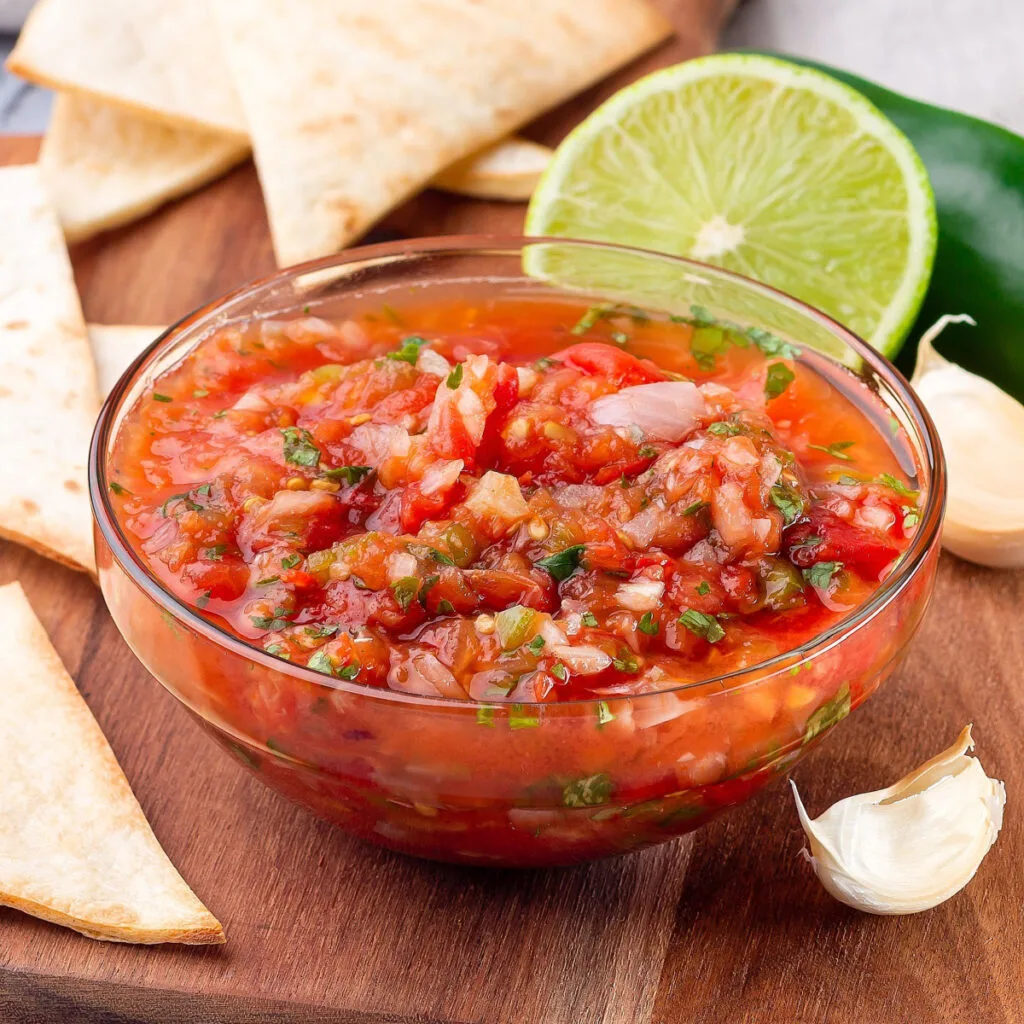
However when you make your own salsa, you can guarantee that not one single hot pepper goes into the mix. But what if you like salsa that is hot and spicy?
No worries! You can control the heat level by adding a few or a lot of hot peppers to the mix. Simply increase the heat level by using whole chili peppers, including the seeds and ribs for maximum spice.
That is the beauty of the simple and easy to make recipe. It is super versatile and it can be customized with various ingredients so that it turns out perfect every time.
What Type of Tomatoes Make The Best Salsa
Although you can technically use any tomato to make homemade salsa, there are some varieties that hold up better than others during the cooking process. However, keep in mind that it is best to use at least 2-3 varieties for the best flavor.
Roma Tomatoes: Also known as plum tomatoes, these are popular for salsa due to their lower moisture content and firmer texture. They have fewer seeds and less juice, making them well-suited for creating a thicker salsa.
San Marzano Tomatoes: Similar to Roma tomatoes, San Marzano tomatoes are known for their rich flavor and low moisture content. They’re often used in Italian dishes, including pasta sauce and salsa.
Heirloom Tomatoes: Heirloom varieties come in various colors, sizes, and flavors. Although they have a meaty texture, they also have a higher moisture content than plum tomatoes.
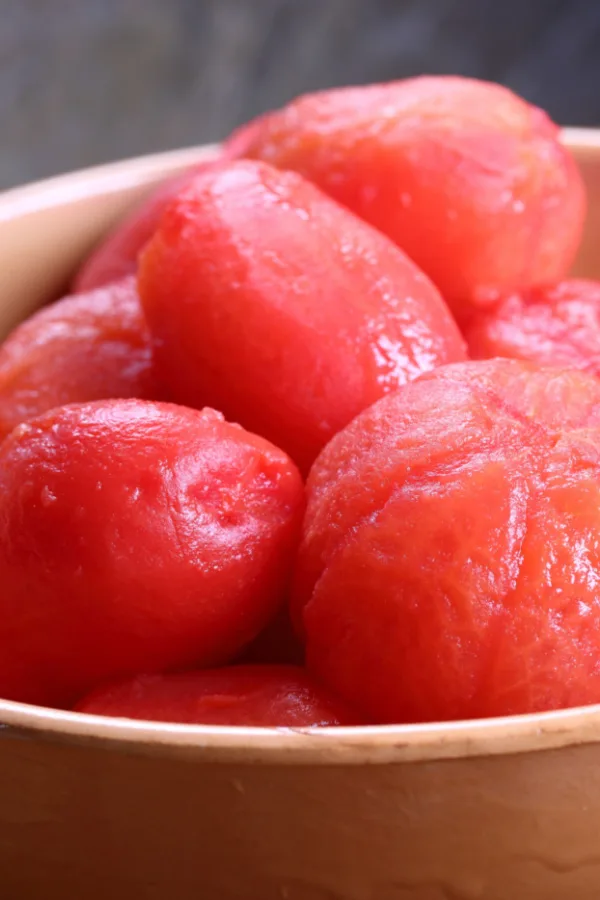
Cherry or Grape Tomatoes: These smaller tomatoes typically have a sweeter flavor than other tomato varieties. They are great to use if you like a sweeter and thinner salsa.
Medium-Sized Round Slicing Tomatoes: If you prefer a milder, less acidic flavor, you can opt for medium-sized slicing tomatoes like Early Girl or Celebrity. However, if you use low-acid tomatoes you will need to store the salsa in the refrigerator, freezer or pressure can it for safe shelf life storage.
Mild, Medium or Hot Salsa
Hot Peppers: The easiest way to add heat to your homemade salsa is by adding hot chili peppers. Common peppers include jalapeños, serrano peppers, or even habaneros if you’re looking for a significant kick.
You can adjust the heat of the peppers by remove the seeds and membranes for mild salsa. Or if you like more intense heat, keep both the ribs and seeds when you dice the peppers. You can even add fresh chopped chili peppers when you serve the salsa for added crunch and heat.
Red Pepper Flakes: Crushed red pepper flakes are a convenient way to add controlled heat. You can sprinkle them into your salsa and adjust the amount based on your desired level of spiciness.
Cayenne Pepper: Ground cayenne pepper is another option for adding heat. It’s quite potent, so use it sparingly and gradually until you achieve the desired spiciness.
Hot Sauce: Adding a few dashes of your favorite hot sauce can quickly increase the heat of your salsa. Start with a small amount and adjust to taste.
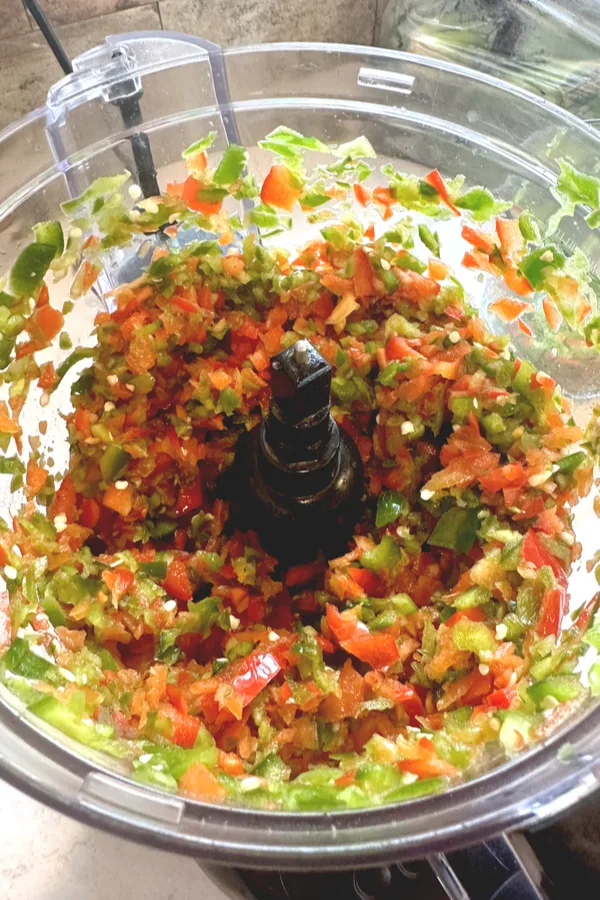
How To Can Homemade Salsa
Use a wide mouth funnel and ladle the salsa into sterilized and heated pint jars, leaving 1/2” headspace at the top for expansion. Then wipe the rim, add a lid and finger tighten the band.
Process the jars in a hot water bath for 15 minutes (once the water comes to a rolling boil). However be sure to adjust the processing time for higher altitudes.
Once the processing time is up, turn off the heat and let the jars sit in the water for 5 minutes. Then use a jar lifter to carefully remove the jars and place on a thick towel and let them cool for 24 hours.
Before storing, check to make sure all jars are sealed by pushing on the lid. If it doesn’t move it is sealed properly. If it didn’t seal, immediately add to your refrigerator and use within 2 weeks.
Freezing Homemade Salsa
For those who don’t have canning equipment you can freeze the salsa for long term storage. Just be sure that the salsa is completely cool before adding it to freezer safe containers.
However be sure to leave the 1/2 inch headspace at the top of the container. The salsa will expand as it freezes and you don’t want to risk the container cracking.
Before the salsa gets put in the freezer label each container and the date you froze it. This way if you make more than one batch and the heat level is different, you will know which one you are using.
When you’re ready to use the frozen salsa, transfer the container to the refrigerator and allow it to thaw slowly. Once thawed, give the salsa a good stir before using to help redistribute any separated liquids.
It’s important to note that freezing can slightly change the texture of salsa, because tomatoes are a high-moisture ingredient. Salsa may become a bit watery after thawing, but you can remedy this by draining any excess liquid before using it or adding fresh ingredients to the mix.
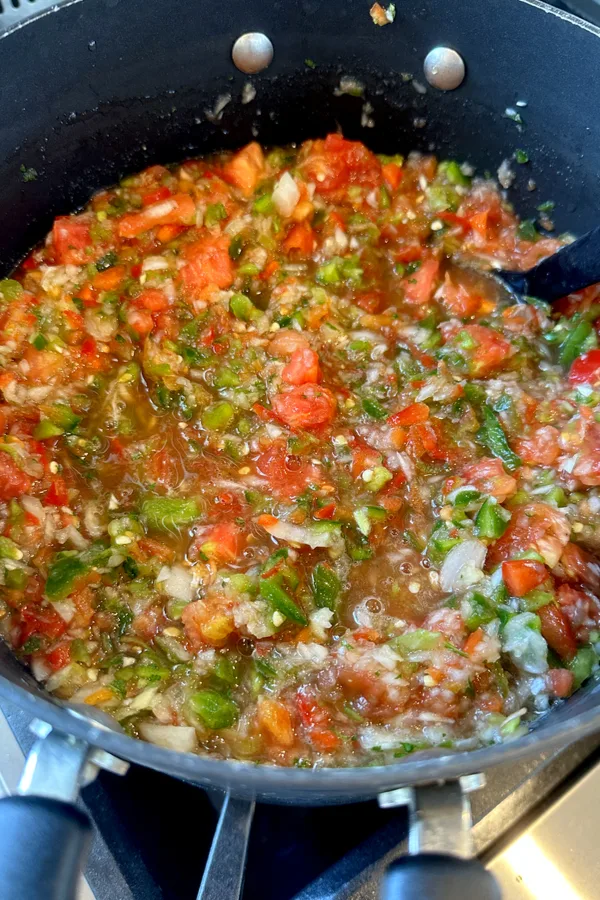
How To Make Serving Salsa Even Better
When serving salsa that has been stored on the shelf or in the freezer for months it is best to add a few fresh ingredients to make it taste even better. Adding 3 simple ingredients will make your homemade salsa taste like it was freshly made.
1. Garlic Salt – Just a dash of garlic salt adds a little flavor without a lot of effort.
2. Diced Onion – If you are looking for that iconic crunch that you get with fresh made salsa or Pico de Gallo, add a little diced onion to your homemade salsa.
3. Diced Peppers – Add a little diced bell or hot peppers to the mix. The firmness of the peppers not only adds a nice crunch but they also add more flavor.
Ways To Use Salsa
- Chips and Dip: The classic use for salsa is as a dip for tortilla chips. You can serve it as an appetizer or snack at parties or gatherings.
- Tacos and Burritos: Salsa adds a burst of flavor to tacos, burritos, and other Mexican-inspired dishes. It can be used as a topping, a filling, or a side condiment.
- Quesadillas: Spread salsa inside a quesadilla before folding it over and grilling or add it as a condiment on top.
- Grilled Meats: Use salsa as a marinade or glaze for grilled chicken, steak, pork, or fish. Brush it on during the last few minutes of grilling for a fresh and flavorful finish.
- Eggs, Omelets and Scrambles: Spoon your homemade salsa over your eggs or fold it into an omelet for a delicious twist on a classic breakfast item.

Homemade Salsa Recipe
*Specific measurements and complete recipe instructions are located in a printable recipe card at the bottom of this article. However, be sure to continue to read the tips and tricks to making this recipe below.
INGREDIENTS
- 8 cups peeled cored & diced paste tomatoes (about 30)
- 5 cups diced peppers mixture of mild and hot (about 4 large bell peppers and 5-6 hot peppers)
- 3 1/2 cups chopped onions (about 5-6 medium onions)
- 3 cloves garlic (peeled)
- 2 Tablespoons finely chopped cilantro
- 1 Tablespoon salt
- ½ teaspoon black pepper
- 1 cup distilled white vinegar (5%)
INSTRUCTIONS
Fill a large pot ¾ full of water and place over high heat. While the water heats to a boil use a small knife and cut a shallow ‘X’ in the skin of the bottom of each whole tomato.
Then place the tomatoes in the boiling water for 1 minute. Then immediately remove the tomatoes and place them into an ice water bath for 1 additional minute to cool.
Remove the tomatoes from the water, and once safe enough to handle peel the skins off. Discard the skins.
Over a large bowl or sink, squeeze the majority of the pulp and juice out of each tomato and discard. Dice the tomatoes in sections slightly larger than the tomatoes you like in your salsa (as they will break down more when cooking). Add the tomatoes to a large stock pot.
Prepare The Peppers:
Remove the seeds and ribs of the peppers and roughly chop them and place them in a food processor. Pulse a few times until they become finely chopped, or finely hand chop the peppers with a sharp knife. Add the peppers to the tomatoes in the stock pot.
Prepare The Onions, Garlic & Cilantro:
Roughly chop the onions and place them in your food processor. Add the peeled garlic and cilantro to the food processor with the onions and pulse until they become finely chopped.
Add chopped onions, garlic & cilantro to the pot. Then add salt, pepper, and vinegar to the mixture.
Place the pot over Medium-High heat until it begins to boil, stirring frequently so that the mixture does not burn to the bottom surface. Reduce the heat and let the salsa simmer for 15 minutes, stirring frequently.
Proceed with the canning instructions below, or let the homemade salsa cool and store in an air tight container in the refrigerator for up to 3 weeks to enjoy fresh.
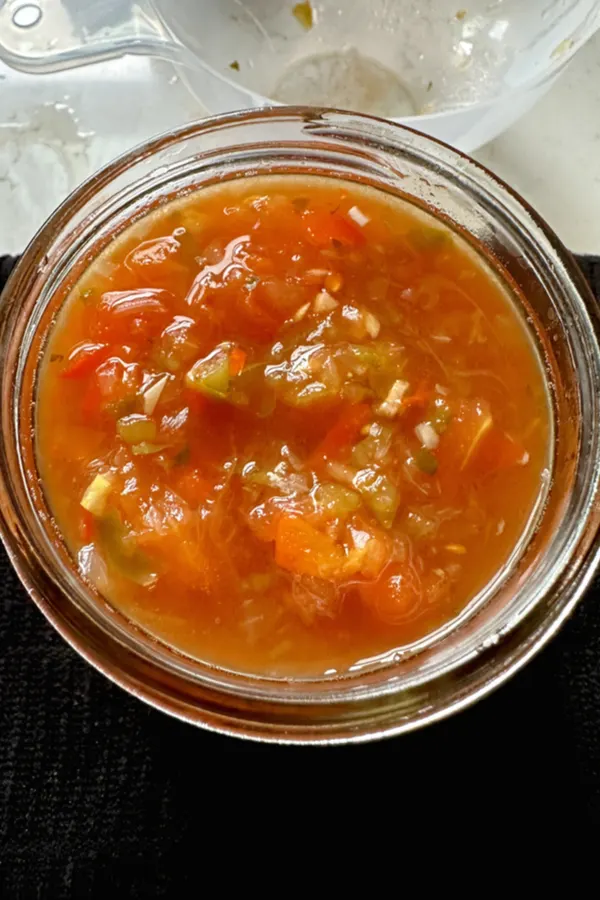
Optional Canning Instructions:
Use a wide mouth funnel and ladle the salsa into sterilized and heated pint jars leaving 1/2” headspace at the top for expansion. Then wipe the rim, add a lid and finger tighten the band. Process the jars in a hot water bath for 15 minutes (once the water comes to a rolling boil). Be sure to adjust the processing time for altitude.
Once the processing time is up, turn off the heat and let the jars sit in the water for 5 minutes. Then use a jar lifter to carefully remove the jars and place on a thick towel and let them cool for 24 hours.
Before storing, check to make sure all jars are sealed by pushing on the lid. If it doesn’t move it is sealed properly. If it didn’t seal, immediately add to your refrigerator and use within 2 weeks.
Freezing Instructions:
Let the salsa come to room temperature. Then place the salsa in freezer safe containers, leaving 1/2 inch headspace to allow for expansion. Store in the freezer for up to 6 months.
Enjoy! Mary

To receive our 3 Recipe Articles in your inbox each week, sign up for our free email list located in the middle of each recipe or email me at contact@makeyourmeals.com. You can also follow us on Facebook and Pinterest. This article may contain affiliate links where a small commission is paid if you purchase a product at no additional cost to you.
Homemade Salsa Recipe
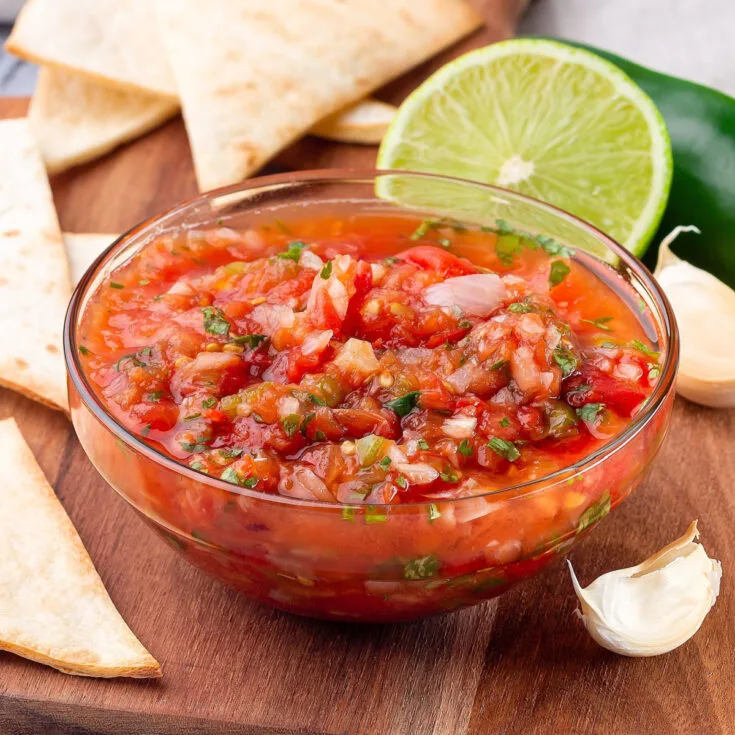
Ingredients
- 8 cups peeled cored & diced paste tomatoes (about 30)
- 5 cups diced peppers mixture of mild and hot (about 4 large bell peppers and 5-6 hot peppers)
- 3 1/2 cups chopped onions (about 5-6 medium onions)
- 3 cloves garlic (peeled)
- 2 Tablespoons finely chopped cilantro
- 1 Tablespoon salt
- ½ teaspoon black pepper
- 1 cup distilled white vinegar (5%)
Instructions
- Fill a large pot ¾ full of water and place over high heat. While the water heats to a boil use a small knife and cut a X in the skin of the bottom of each whole tomato. Then place the tomatoes in the boiling water for 1 minute. Then immediately remove the tomatoes and place them into an ice water bath for 1 additional minute to cool.
- Remove the tomatoes from the water, and once safe enough to handle peel the skins off. Discard the skins.
- Over a large bowl or sink, squeeze the majority of the pulp and juice out of each tomato and discard. Dice the tomatoes in sections slightly larger than the tomatoes you like in your salsa (as they will break down more when cooking). Add the tomatoes to a large stock pot.
- Prepare The Peppers: Remove the seeds and ribs of the peppers – roughly chop them and place them in a food processor. Pulse a few times until they become finely chopped, or finely hand chop the peppers with a sharp knife. Add the peppers to the tomatoes in the stock pot.
- Prepare The Onions, Garlic & Cilantro: Roughly chop the onions and place them in your food processor. Add the peeled garlic and cilantro to the food processor with the onions and pulse until they become finely chopped.
- Add chopped onions, garlic & cilantro to the pot. Then add salt, pepper, and vinegar to the mixture.
- Place the pot over Medium-High heat until it begins to boil, stirring frequently so that the mixture does not burn to the bottom surface. Reduce the heat and let the salsa simmer for 15 minutes, stirring frequently.
- Proceed with the canning instructions below, or let the salsa cool and store in an air tight container in the refrigerator for up to 3 weeks to enjoy fresh.
Optional Canning Instructions:
- Use a wide mouth funnel and ladle the salsa into sterilized and heated pint jars leaving 1/2” headspace at the top for expansion. Then wipe the rim, add a lid and finger tighten the band. Process the jars in a hot water bath for 15 minutes (once the water comes to a rolling boil). Be sure to adjust the processing time for altitude.
- Once the processing time is up, turn off the heat and let the jars sit in the water for 5 minutes. Then use a jar lifter to carefully remove the jars and place on a thick towel and let them cool for 24 hours.
- Before storing, check to make sure all jars are sealed by pushing on the lid. If it doesn’t move it is sealed properly. If it didn’t seal, immediately add to your refrigerator and use within 2 weeks.
Freezing Instructions:
Let the salsa come to room temperature. Then place the salsa in freezer safe containers, leaving 1/2 inch headspace to allow for expansion. Store in the freezer for up to 6 months.
Notes
Recipe provided by Make Your Meals
Nutrition Information:
Yield:
7Serving Size:
1 pintAmount Per Serving: Calories: 119Total Fat: 1gSaturated Fat: 0gTrans Fat: 0gUnsaturated Fat: 0gCholesterol: 0mgSodium: 922mgCarbohydrates: 26gFiber: 5gSugar: 13gProtein: 4g
Nutritional Information is to be used as a general guideline only . Nutritional calculations will vary from the types and brands of the products used.
